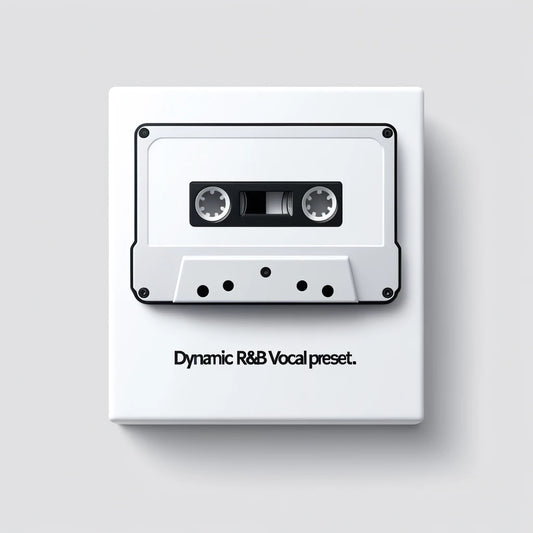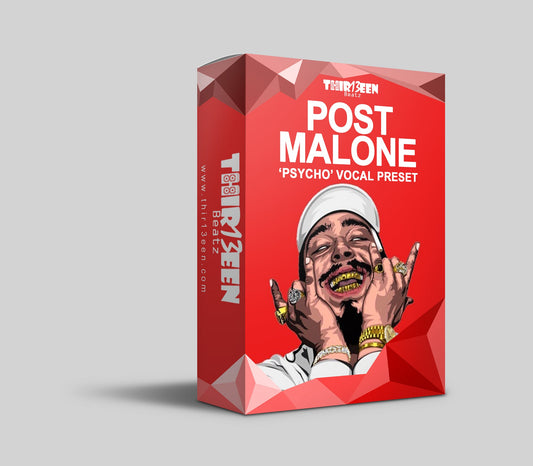In this video I show you how to make your vocals sound like Post Malone.
Post Malone has a very unique and recognizable style of singing that is both mellow and soulful. In this tutorial I show you the techniques he uses to get that sound, and how you can apply them to your own vocals!
In the world of pop music, there are few artists as successful as Post Malone. His unique blend of R&B, hip-hop, and pop has made him one of the biggest names in the business, and his songs have been streamed billions of times on Spotify alone. But what makes Post Malone's vocals so special? In this blog post, we'll break down the techniques that recording artists and sound engineers can use to make their vocals sound like Post Malone.
EQ Techniques
When it comes to vocal eq, there are a few key things to keep in mind. First, you'll want to cut out any unwanted frequencies that are muddying up your sound. Second, you'll want to boost the frequencies that will help your vocals cut through the mix. And lastly, you'll want to use a bit of compression to even out the levels. With these tips in mind, let's take a look at a few specific eq techniques that can help you get killer vocal tracks.
First, try using a high-pass filter to remove any low-end rumble that's muddy up your sound. Second, try boosting the higher frequencies around 3-5kHz to help your vocals cut through the mix. Lastly, use a bit of compression to even out the levels and add some punch. By following these simple tips, you'll be well on your way to getting killer vocal tracks that will sound great in any mix.
One of the most important aspects of gettingPost Malone-esque vocals is using EQ effectively. If you want your vocals to have that smooth, almost talk-singing quality that Post Malone is known for, you'll need to use a low-pass filter to roll off any frequencies above 4kHz. This will give your vocals a warmer, more natural sound.
You'll also want to use a high-pass filter to remove any unwanted low frequency rumble. A good rule of thumb is to set the high-pass filter at 80Hz. This will help clean up your vocal track and prevent muddiness.
Compression Techniques
As a hip hop artist, I'm always looking for new ways to add punch to my tracks. And one key element of any good hip hop song is the vocals. That's why I'm always on the lookout for new compression techniques that can help me get the most out of my vocal tracks.
By using compression, I can control the dynamics of my voice, making it sound both powerful and clear. And by experimenting with different settings, I can find just the right amount of compression to give my vocals the edge they need to cut through the mix. So if you're looking to add some extra attitude to your vocals, don't be afraid to experiment with compression. It might just be the secret ingredient you've been looking for.
Another crucial element of getting Post Malone-esque vocals is using compression correctly. You'll want to use a moderate amount of compression to even out the level of your vocals and prevent them from sounding too dynamic. A good starting point is a ratio of 2:1 with a threshold around -18dB. This will give you nice, even levels without squashing your signal too much.
Reverb Techniques
Adding reverb is a great way to add space and depth to your vocal track. But you'll want to be careful not to overdo it. A little bit of reverb can go a long way, so start with a small room size and a short decay time. This will give your vocals that pleasant sense of space without making them sound muddy or washed out.
Reverb is an important tool for any musician. By adding reverb to your songs, you can create a sense of space and depth that will make your tracks sound more polished and professional. There are a few different techniques that you can use to add reverb to your vocals.
One popular technique is to send your drums through a reverb plug-in. This will give your vocals a sense of spaciousness and make them sound bigger and more powerful. Another popular technique is to use a sample with a long tail of reverb.
This will give your track an atmospheric quality that can really set the mood. experiment with different reverb techniques and see which ones work best for your style of music.
Conclusion:
By following the EQ, compression, and reverb techniques outlined in this blog post, you can make your vocals sound like Post Malone in no time! So why not give it a try? You might just be surprised at how easy it is to get those elusive Post Malonevibes .









